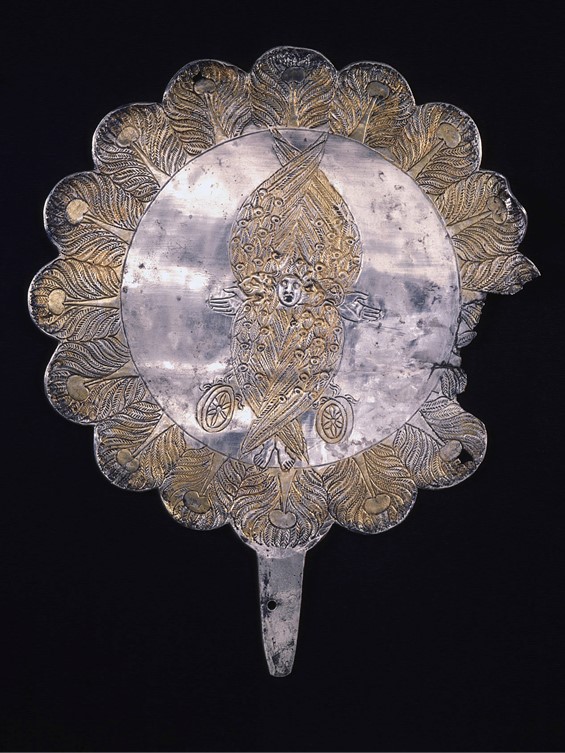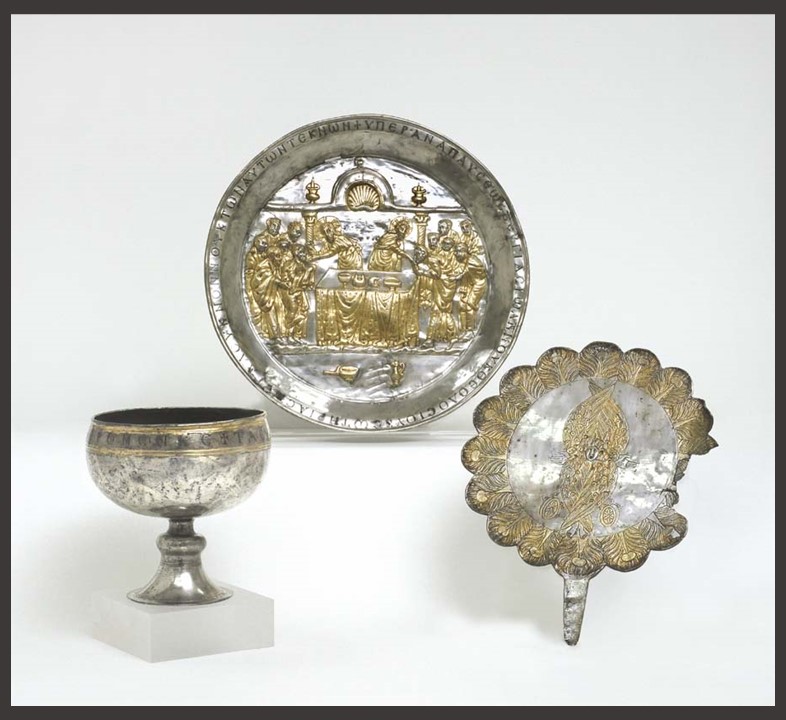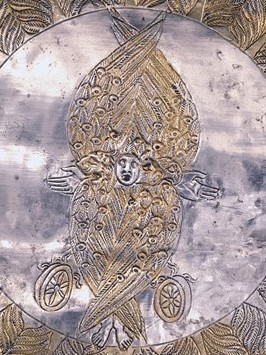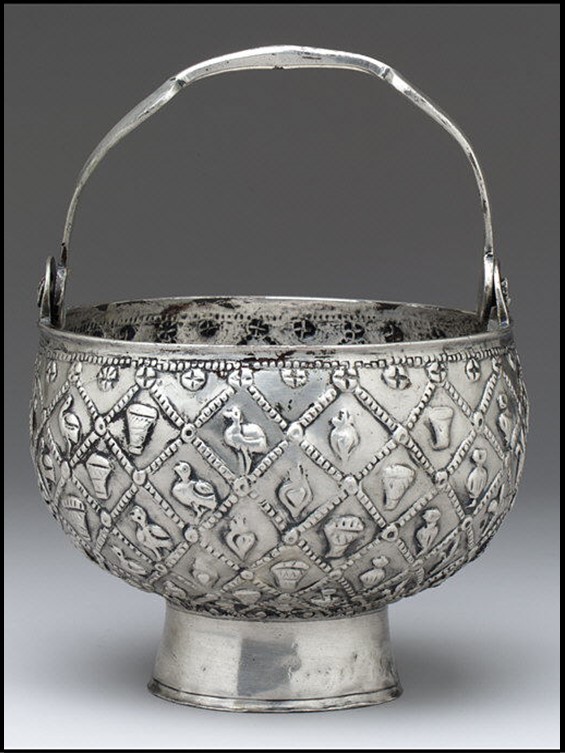
https://www.metmuseum.org/art/collection/search/464115?searchField=All&sortBy=Relevance&ao=on&showOnly=
openAccess&ft=Byzantine+art&offset=0&rpp=40&pos=15
Vrap (it means ‘running’ in Albanian) is a town located in Albania about 20 km south of Tirana, the country’s capital town. In 1901, in the Vrap area, near the ancient city of Durazzo and Via Egnatia, an exceptional hoard of silver and gold was discovered within a buried copper cauldron. This amazing treasure, known today as the Vrap Treasure is over twelve pounds of gold and three pounds of silver, including ten silver or gold vessels; thirty gold belt fittings; parts of a golden candlestick; and several gold bars and strips! My favourite amongst them is a Byzantine Silver Bucket! https://books.google.gr/books?id=6M7WCQAAQBAJ&printsec=frontcover&source=gbs_ge_summary_r&redir_esc=y#v=onepage&q&f=false p. 36
The Byzantine Silver Bucket from Albania is a deep, footed Bowl with geometric, beaded, diamond patterns around the exterior. Set within the diamonds are birds, flowers, and various other objects, like palmettes, baskets, urns, and edifices(?). The design executed in the repoussé technique is simple but well-finished by an accomplished Byzantine provincial silversmith. Was the Vrap Silver Bucket an incense censer or was it used for drawing water? There is no definite answer.
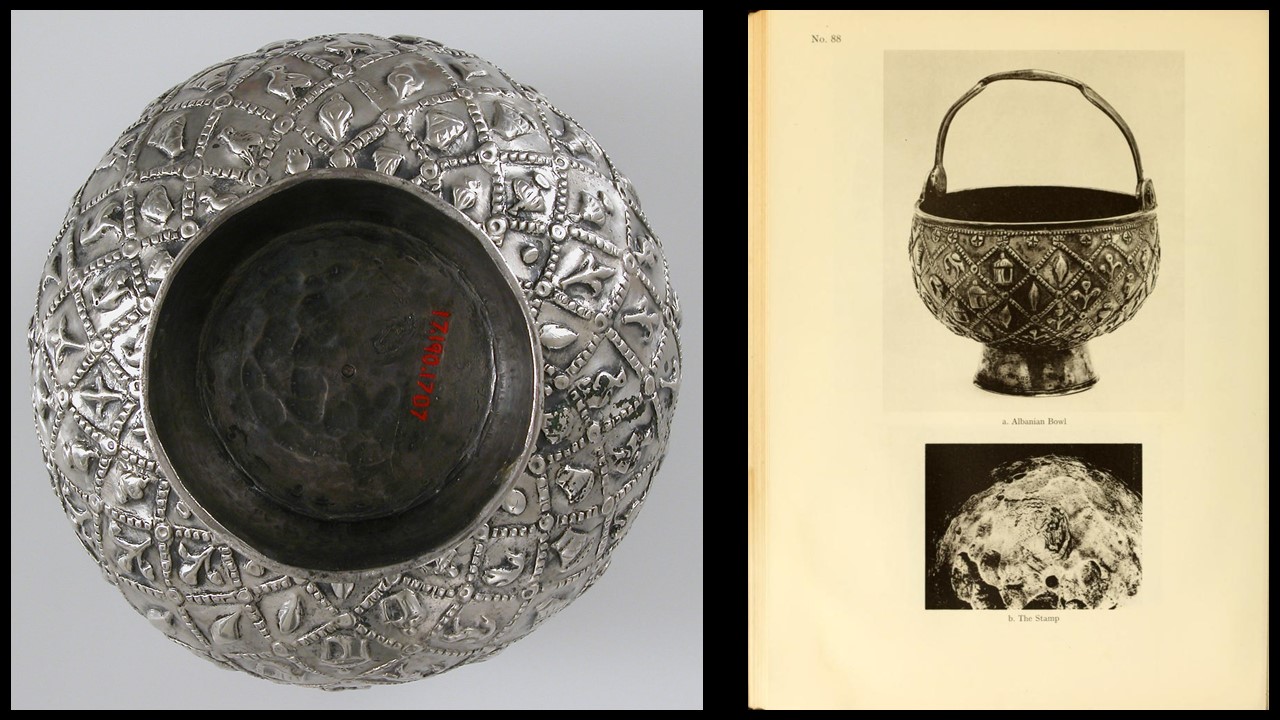
Scholars have been debating for years over the owner of the Vrap Treasure, and the identity of the silversmiths who created its artifacts. One thing is certain, the Vrap Treasure includes only two objects that most scholars today would describe as Byzantine: the discussed Silver Bucket, and a silver pitcher, both with what appear to be imperial control stamps. The stamp on the Bucket looks hexagonal (?), possibly containing a monogram, but no inscription can be traced. It is also difficult to say whether the stamp was applied before or after the vessel was decorated. https://www.metmuseum.org/art/collection/search/464115?searchField=All&sortBy=Relevance&ao=on&showOnly=openAccess&ft=Byzantine+art&offset=0&rpp=40&pos=15 and https://archive.org/details/byzantin00dodd/page/246/mode/2up
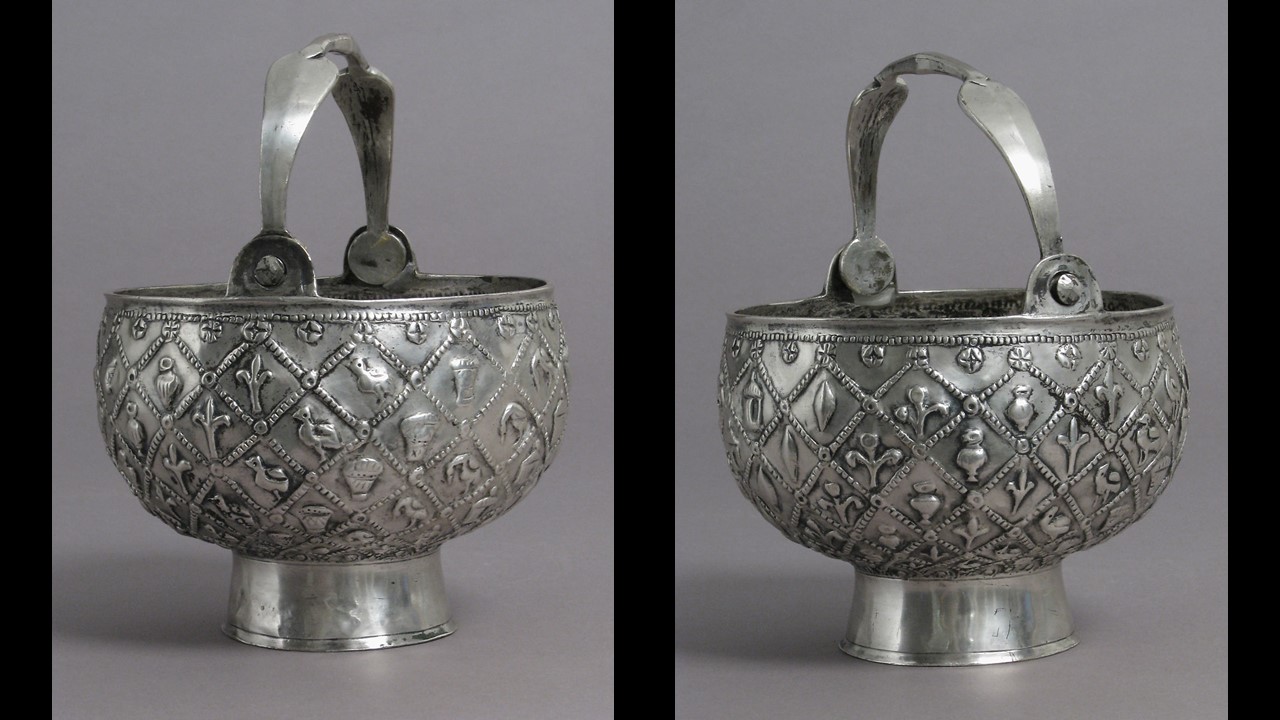
https://www.metmuseum.org/art/collection/search/464115?searchField=All&sortBy=Relevance&ao=on&showOnly=
openAccess&ft=Byzantine+art&offset=0&rpp=40&pos=15
The ”archaeology” of the Treasure’s discovery is best described by J. Strzygowski in 1917… An Albanian farmer near Vrap . . . uncovered in a field a copper kettle which he appropriated, and concerning himself little with the contents, he sold it, for a pair of medschidjes, to three Albanians, who brought it to their residence tower in the vicinity of Arbõna, a place to the north of Vrap . . . The subsequent attainment of individual pieces dragged on for about five years, in part under romantic circumstances. There would be no scholarly interest in going into more detail. The Vrap Treasure, including the Byzantine Silver Bucket, was bought by J. Pierpont Morgan on April 4, 1912. In 1917 the Vrap Treasure was donated to the Metropolitan Museum of Art in New York. Why these varied objects were brought together remains a mystery. Some scholars have suggested that the objects were part of a treasure belonging to an Avar chief; others have speculated that they were the property of an Avar craftsman. It will be interesting to know… https://www.academia.edu/7674370/Ugly_but_important_the_Albanian_Hoard_and_the_making_of_the_archaeological_treasure_in_the_early_twentieth_century_The_making_of_the_archaeological_treasure and file:///C:/Users/aspil/Downloads/The_Arts_of_Byzantium_The_Metropolitan_Museum_of_Art_Bulletin_v_58_no_4_Sp ring_2001.pdf page 32
For a Student Activity, please… Check, HERE!
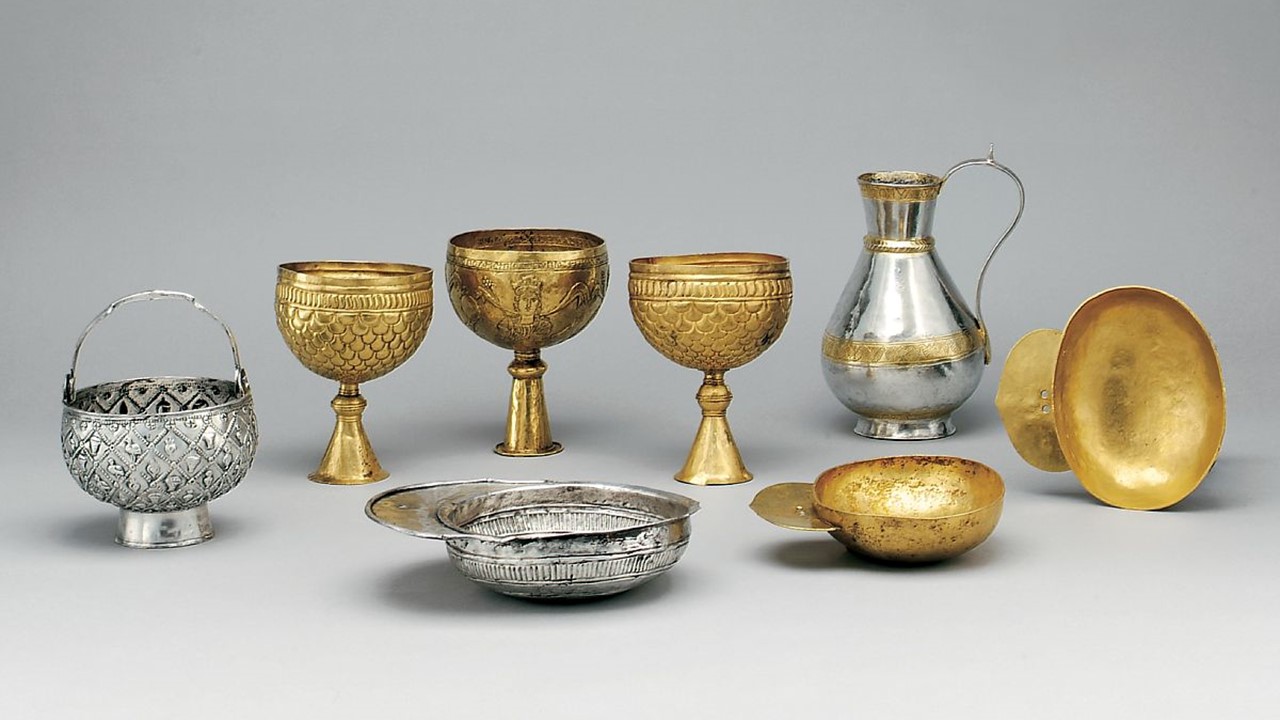
Breck, Joseph, and Meyric R. Rogers, The Pierpont Morgan Wing: A Handbook. 1st ed. New York: The Metropolitan Museum of Art, 1925. p. 35, fig. 15, ill. p. 36. https://books.google.gr/books?id=6M7WCQAAQBAJ&printsec=frontcover&source=gbs_ge_summary_r&redir_esc=y#v=onepage&q&f=false
Melanie Holcomb, Ugly but . . . important’: the Albanian Hoard and the making of the archaeological treasure in the early twentieth century: The making of the archaeological treasure, page 11 https://www.academia.edu/7674370/Ugly_but_important_the_Albanian_Hoard_and_the_making_of_the_archaeological_treasure_in_the_early_twentieth_century_The_making_of_the_archaeological_treasure
Dodd, Erica Cruikshank. Byzantine Silver Stamps. Washington: J. J. Augustin, 1961. no. 88, pp. 246–247 https://archive.org/details/byzantin00dodd/page/246/mode/2up
Brown, Katharine R., Dafydd Kidd, and Charles T. Little, ed. From Attila to Charlemagne: Arts of the Early Medieval Period in the Metropolitan Museum of Art. New York and New Haven: The Metropolitan Museum of Art, 2000. p. 185, 343, fig. 18,16.7.https://books.google.gr/books?id=FYI8xsBHeSMC&printsec=frontcover&redir_esc=y#v=onepage&q&f=false
